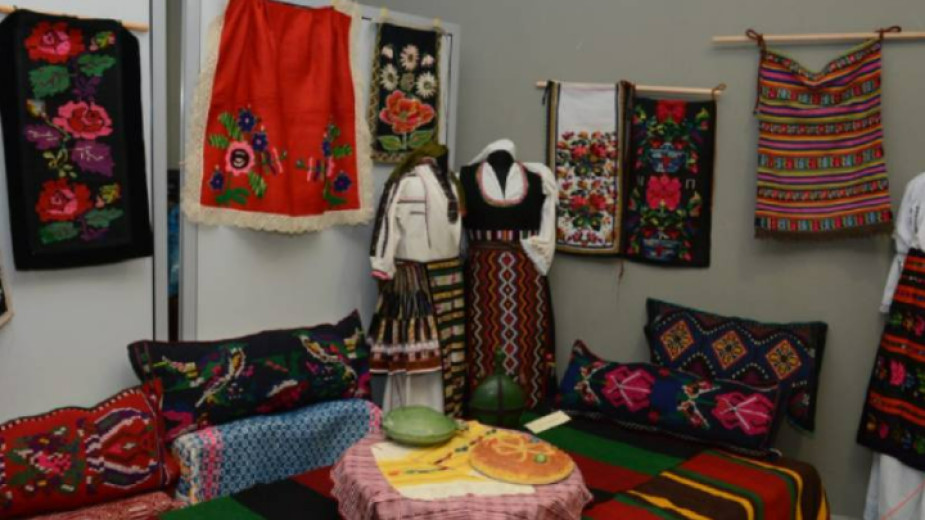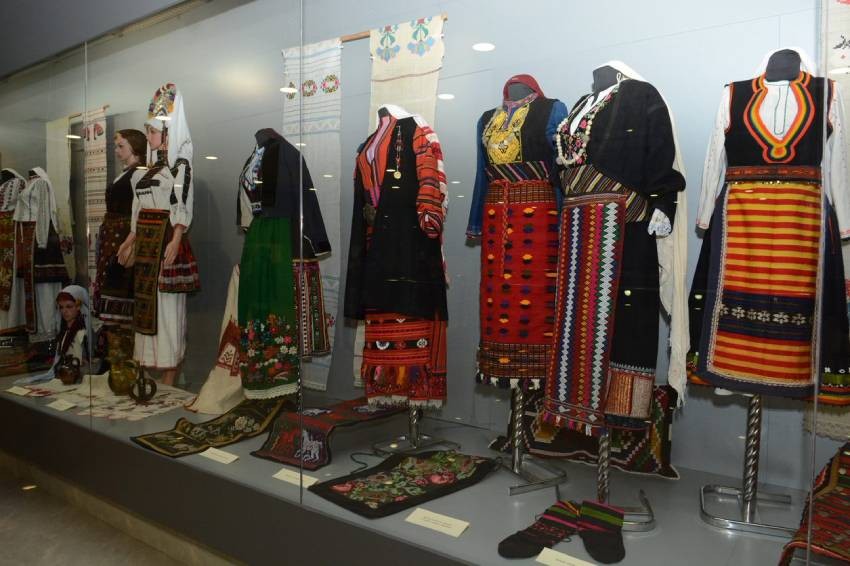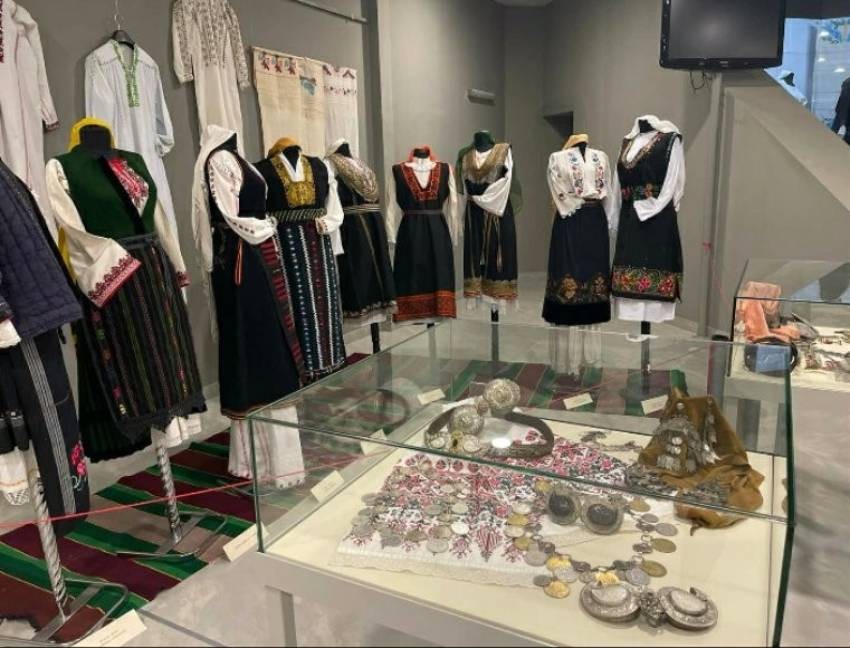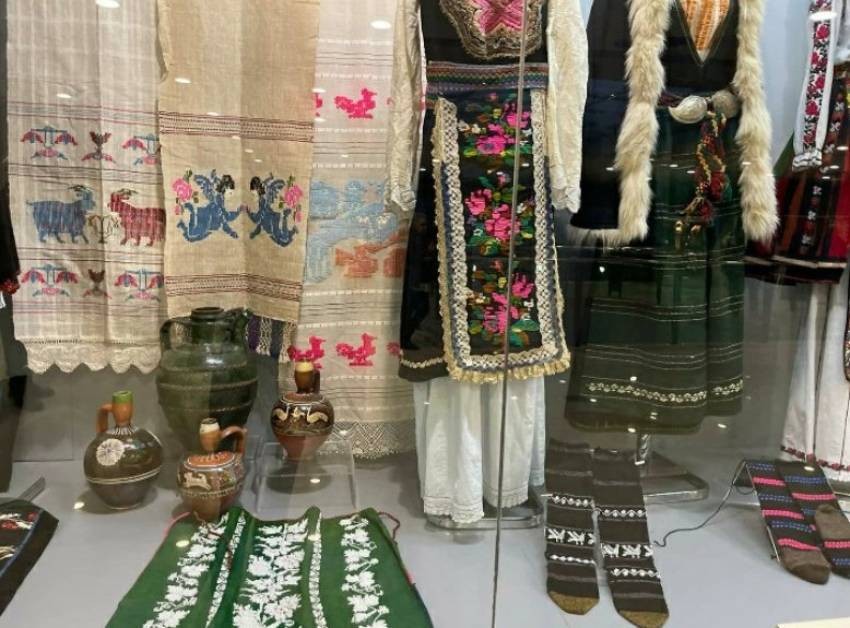 10
10
Traditional women’s national outfits and various household items used by Bulgarians in the period from the end of the 19th and the beginning of the 20th century brought colour to the Regional Museum of History in Stara Zagora. The exhibits are part of an exhibition called “My ethnographic world. Collected and preserved for the generations by Rumyana Mehandova” which is on until 2 May, 2023.

“The exhibits are mostly traditional outfits from different regions of Bulgaria but also many aprons with a diversity of geometric, plant and animal ornaments, towels, mesals – a special kind of towel, part of the dowry, gifted at weddings, engagements and other festive occasions,” Rumyana Mehandova says in an interview with Radio Bulgaria’s Deislava Semkovska. “I am also displaying woven cushions, as well as wine flasks with the portraits of Hristo Botev, Vasil Levski, or with pictures of flowers, for example.”

The dazzling colours of the items of clothing that were once entirely made by hand are complemented by the magic of jewellery – the different items denoted the marital status, the age and the social standing of the woman that owned them. Buckles were a must in any female outfit, as were the strings of gold coins (pendari) that are on display as part of the exhibition.

The skills and the imagination of the master-potters are revealed in an array of different items.
“Pottery is my favourite, it is a long-time passion for me,” Rumyana Mehandova says. “The exhibition features 30 items or so, they are either unique or very rare, there are very few of them even in museums.”

The exposition at the Museum of History in Stara Zagora displays but a fraction of Rumyana Merhandova’s collection. She has been collecting authentic handicrafts for over 40 years and now owns the biggest collection of domestic items in Bulgaria.
“I don’t know what inspired me to put them on display,” Rumyana Mehandova says. “Maybe at one point I just came to the realization that this incredible traditional wealth should be shared with the public. Beauty, collective memory that one shouldn’t keep to oneself, items that every Bulgarian should be able to see. They are sure to touch many hearts, many people will feel proud of their ancestors and the items crafted by them.”
Photos courtesy of Rumyana Mehandova and the Regional Museum of History, Stara Zagora, photographer: Atanas Zhekov
Digital nomadism, a lifestyle where people choose remote work so they can travel and live in different environments, is becoming a phenomenon on the way to overturn our ideas about work and way of life. In this regard, Bulgaria offers a palette of..
On 26 and 27 April, Sevlievo in Central Bulgaria is hosting the festival “Seme Balgarsko ”. For its 11 th edition, the organizers have a colourful traditional lineup. “The festival will enable visitors to meet manufacturers of Bulgarian..
The group cycling tour along the tourist route of the Black Sea Route Epic Tour 2025 started today . According to the extreme sports website 360mag.bg, a group of more than 30 cyclists will spend ten days riding along coastal paths through forests,..
Digital nomadism, a lifestyle where people choose remote work so they can travel and live in different environments, is becoming a phenomenon on the way..

+359 2 9336 661
